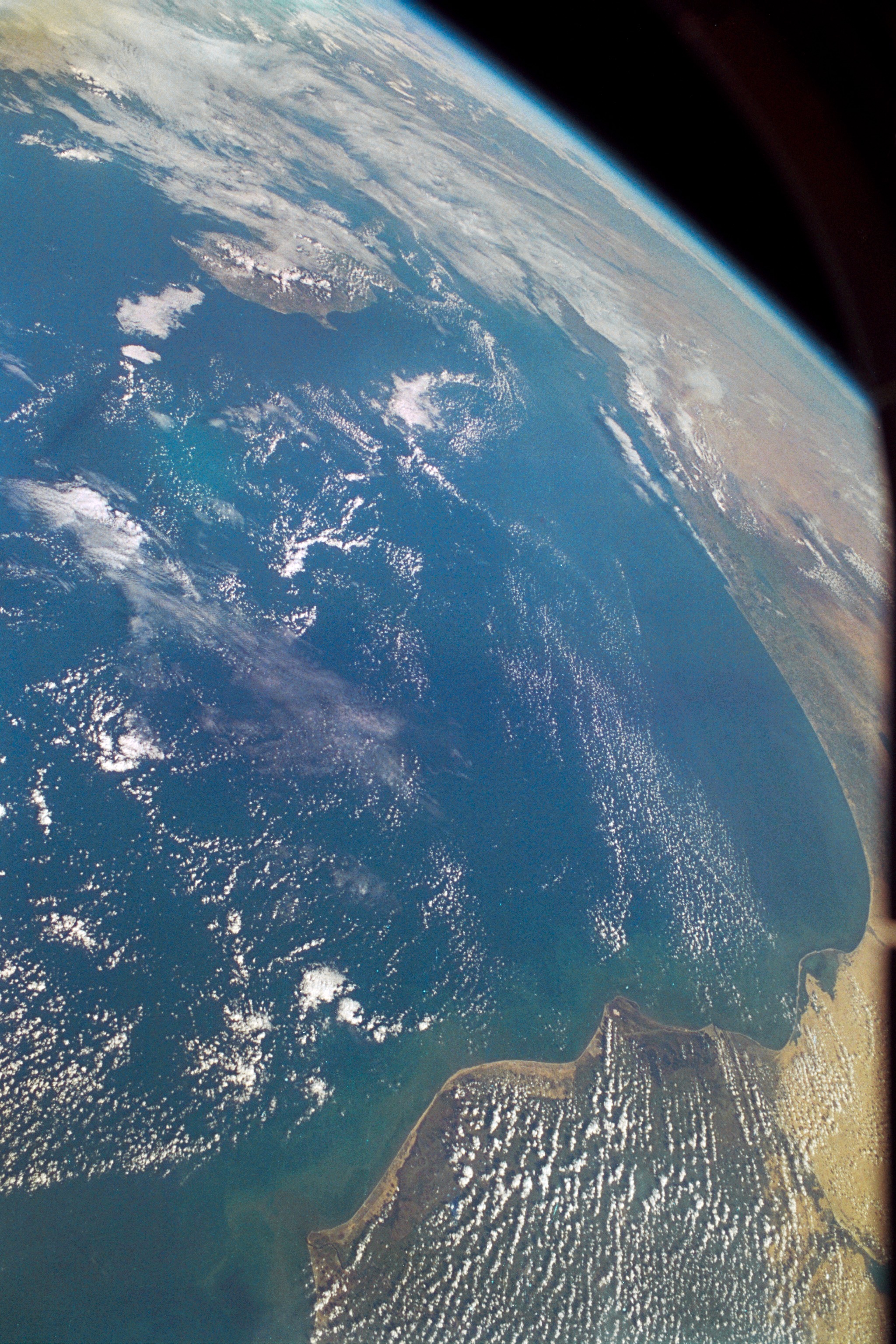
It’s a good thing you can’t see human suffering in infrared wavelengths. That kind of pain is something seen in the visible, felt in the viscera. If it showed up in the infrared it would mean that with the right instruments, you could see it from space, and that would change everything. There’s not a person who’s ever left the planet who hasn’t commented on the transcendent beauty of the blue, green, white Earth hanging in what otherwise appears to be a void. But what if Syria glowed scarlet like the open wound it is? What if West Africa went dark and cold to reflect the Ebola deaths that are still happening there?
Astronauts are spared such sights—or at least most of them are. But Ron Garan saw them anyway. Garan spent two weeks aboard the space shuttle Discovery and the International Space Station in 2008, then returned to space for a five-and-a-half-month stay aboard the station in 2011. That last tour of duty included the month of August—most significantly August 24, the day Tripoli fell during the Libyan civil war. Garan happened to look out the window that day and snapped a picture that included Libya—a place that was beautiful from orbit but bleeding up close.
The experience, along with many others others like it during the collective 179 days Garan spent in space, changed a great many things for him. Life on Earth, he came to realize, is experienced two-dimensionally—with all of the distortion that that implies. The people and things close to you obscure the ones farther away; objects shrink as they approach the horizon—dwindling in both size and significance. One Ebola death in the U.S. galvanizes our attention. Ten thousand in Africa barely move us.
Such a blinkered view is impossible from orbit, where you take in whole sweeps of the borderless globe in a glance. Garan, accordingly, returned home to write a book, The Orbital Perspective, that movingly explains the impact of such a perspective shift—one that by no means occurs for every astronaut.
The late Jack Swigert, command module pilot of Apollo 13, once observed that the very things that qualify astronauts to go to space—a mission-first, get-it-done pragmatism that doesn’t allow for a lot of rhapsodic silliness—often disqualifies them to feel or describe their experiences terribly deeply. Garan was the rare exception and is now devoting himself to working for a world that functions the way it appears to function from space—as an organic whole, not a fragmented collection of continents, nations, communities and sects. The book’s foreword is written by Muhammad Yunus, the Bangladeshi economist who won the 2006 Nobel Peace prize for pioneering the concept of microloans—making very small amounts of money available to people who would otherwise not qualify for credit so that they can start businesses or otherwise become self-sufficient.
A fair bit of the book is devoted to exploring similar kinds of work done by similar kinds of social entrepreneurs. There is Amanda Lindhout, the Canadian journalist who spent 460 days in captivity after being kidnaped by Somali extremists in 2008 and then, after being released, went home to found the Global Enrichment Foundation, in support of education in Somalia. There is Engineers Without Borders (EWB), a group dedicated to bringing solar power, food-preservation systems and other technological essentials to underserved parts of the world.
Garan, in fairness, had an inclination toward good works even before he first flew in space—founding the Manna Energy Foundation to help address the developing world’s need for fresh water, renewable energy, access to communications and other basics. He has since worked with EWB and NASA’s Johnson Space Center to further the group’s work. But his trips to space provided him a certain authority—and urgency—he lacked before.
There’s an undeniable wonk appeal to Garan’s approach to the business of saving and improving lives. He finds metaphorical power in a hunk of hardware most people have surely never heard of: the Apollo-Soyuz docking module, an ugly 4,400 lb. (2,000 kg) piece of metal that made the first joint U.S.-Soviet spaceflight possible, in 1975, allowing two incompatible spacecraft—from two incompatible cultures—to link-up in orbit. He describes the Apollo 13 rescue less as the gripping tale of survival it surely was than as the world’s “first hackathon.”
He sees, similarly, more than a feel-good story in the successful international effort to save 33 trapped Chilean miners in 2010. Instead, he sees it as a template for global cooperation, one that came complete with group cheers and team shirts to foster a feeling of mission and camaraderie among the rescuers. “There have been disasters of similar or greater scale where countries decided to go it alone,” Garan writes, “leading to less desirable outcomes.”
Astronauts have a long tradition of going to space and then coming home to write about their adventures. But in those cases, the books generally explore what the astronauts themselves saw and felt and did and how they put those lessons to use later in life. In Garan’s case—and perhaps Garan’s alone—the message is how the rest of us can put his lessons to use. The Orbital Perspective may not be the most cinematic tale ever told from space, but it could wind up being the most important.
More Must-Reads From TIME
- The 100 Most Influential People of 2024
- Coco Gauff Is Playing for Herself Now
- Scenes From Pro-Palestinian Encampments Across U.S. Universities
- 6 Compliments That Land Every Time
- If You're Dating Right Now , You're Brave: Column
- The AI That Could Heal a Divided Internet
- Fallout Is a Brilliant Model for the Future of Video Game Adaptations
- Want Weekly Recs on What to Watch, Read, and More? Sign Up for Worth Your Time
Write to Jeffrey Kluger at jeffrey.kluger@time.com